
Created: 09/20/04
Links:
– Newest DaDane
– Previous DaDane
– Archived DaDanes
– Copyright Policy
Available
now
DaDane of DaWeek
T-shirts & Sweatshirts
![]()
Coming soon...
DaDane Notecards &
Prints

– JAPAN: Our Final Port – September 20, 2004 – My last installment chronicled our first day in Taiwan. We stayed in Taiwan for four days. In retrospect the country was more engaging than I thought at the time. I could write a lot more about it – after all, we spent two full days traveling from one end of the island to the other with the "travel agent from hell" – but I'll skip that for now. Maybe I am not ready to relive it just yet. After two more days at sea we docked in Kobe, Japan. We would be in Japan for six days. That was longer than any other stop along the way. There had been some good-natured grumbling among the faculty and students about the length of our stay. We all knew Japan would be the most expensive country on our itinerary in terms of goods and services. Many felt that some of our time in Japan would have been better spent in an earlier port, such as Vietnam. (Everybody wanted more time in Vietnam.) As it turned out, however, Japan charmed us all. Yes, it was terribly expensive, but it offered a lot in return.
As it so happened, we arrived in Hiroshima just one day before the 59th anniversary of the bombing. On August 6, 1945, the first atomic bomb was used in warfare and Hiroshima was its victim. Over 200,000 were killed and countless others were seriously injured. Mankind had officially entered the atomic age. There was no going back. The Peace Dome Hiroshima has since been rebuilt. It is now a modern city and, more importantly, a widely recognized international center for world peace. The remains of the Exhibition Hall have been preserved unchanged since that fateful day in 1945. Now known as the Peace Dome, or Atomic Dome, it has become the most famous landmark in Hiroshima, a powerful symbol of the horror of war and the desire for lasting peace. I stood before the Peace Dome with goose bumps and a lump in my throat. It was an emotional moment.
We next visited the Peace
Memorial Museum.
It was an uncomfortable experience, but so worthwhile.
The museum displays large models and photographs of Hiroshima, before
and after the bombing, film clips, narratives, photos and poignant
artifacts such as children's toys and clothing, plus a watch that
stopped at 8:15am,
the exact moment of the bomb blast. Until I toured the museum, I did
not grasp the enormity of the destruction and the scope of human suffering
that befell Hiroshima. The moral justification for dropping the atomic
bombs on Hiroshima and Nagasaki is something that has been – and will
continue to be – hotly debated. Mitaki (Three Waterfalls) Temple Kyoto
In addition to visiting temples and shrines, we took pleasure in wandering through old neighborhoods lined with beautifully crafted wooden buildings from the Tokugawa period (17th century). I remembered these from twenty-four years ago and it was a thrill to see that so many still survive, especially since earthquakes and fires are an ever-present danger. These aged wooden structures are fragile and irreplaceable.
Kyoto Station I have since learned that Kyoto Station, which opened in 1997, is the largest train station in all of Japan and one of Japan's largest buildings. (No surprise there, having seen it in person.) It houses the Japanese Railway (JR), various subway lines, a large hotel, a major department store, three theaters, a game center, a shopping mall, government offices, restaurants and an observation deck. A stunning combination of soaring glass and steel and with colossal public spaces, Kyoto Station has been highly controversial among the citizens of Kyoto. Some feel it "ruptures" the city's architectural heritage. Maybe so, but the fluidity of space, intriguing discontinuities of scale, open roof lines and infinitely mirrored reflections create a magical sensory experience.
I've become a big fan of Hiroshi Hara and I took many photographs of Kyoto Station and the Sky Building. Click here if you'd like to see a few of them. Hiroshi Hara Photo Gallery || Previous Installment || Next Installment ©2002-2008 by Ginnie Saunders. All rights are reserved. No part of this web site may be reproduced or transmitted in any form or by any means — electronic or mechanical, including photocopying, recording, or by any information storage or retrieval system — without written permission from Ginnie Saunders. To learn more about copyright issues on the web, visit the Web Law FAQ.
|


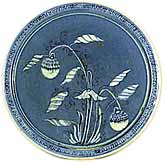 Osaka
Osaka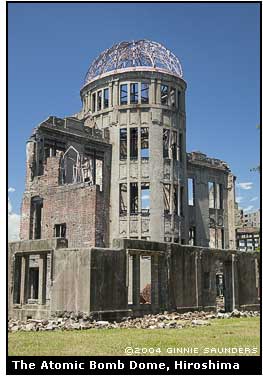 Hiroshima
Hiroshima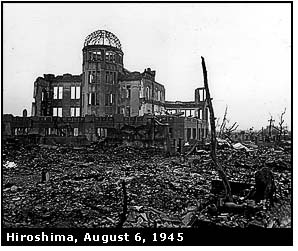 The Hiroshima Peace
Memorial Museum
The Hiroshima Peace
Memorial Museum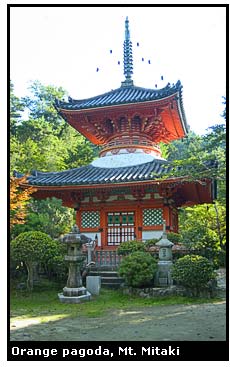 I will leave that to the
historians. One can only hope and pray that never again will man feel
compelled to use such weapons. The nuclear bombs we have today are,
quite literally, a thousand times more powerful than the 15 kiloton-yield
uranium bomb that
was dropped on Hiroshima.
I will leave that to the
historians. One can only hope and pray that never again will man feel
compelled to use such weapons. The nuclear bombs we have today are,
quite literally, a thousand times more powerful than the 15 kiloton-yield
uranium bomb that
was dropped on Hiroshima.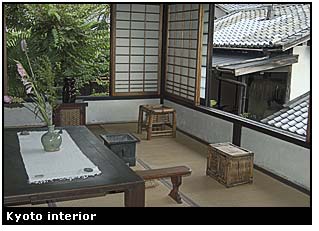 Kyoto,
established in 794, is a historic city with wonderful atmosphere.
It was
the capital of Japan
for over 1000 years until the capital was
moved
to Edo (Tokyo) in 1846. During its political heyday, Kyoto developed
as an intellectual, cultural and commercial center, full of
temples
and
shrines, castles and palaces, teahouses and gardens. Many of its most
famous landmarks and neighborhoods have survived into
the
twenty-first
century, in part because Kyoto was the only
prominent Japanese city to escape the Allied bombings.
Kyoto,
established in 794, is a historic city with wonderful atmosphere.
It was
the capital of Japan
for over 1000 years until the capital was
moved
to Edo (Tokyo) in 1846. During its political heyday, Kyoto developed
as an intellectual, cultural and commercial center, full of
temples
and
shrines, castles and palaces, teahouses and gardens. Many of its most
famous landmarks and neighborhoods have survived into
the
twenty-first
century, in part because Kyoto was the only
prominent Japanese city to escape the Allied bombings.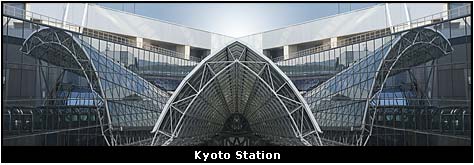
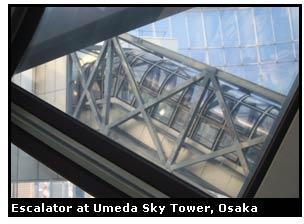 Hiroshi Hara
Hiroshi Hara